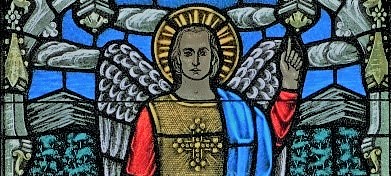People attending our Mass think a lot of things about the different postures we take. Things like “Oh, up we go
again.” And “Why are we kneeling?” Which is why this series focuses on the “why” of sitting, standing, and
kneeling during a Mass.
Sitting: In the bible, sitting is a posture of listening. We sit for the epistle reading, the gradual. We also sit for the
offering, and the homily (sermon). We sit, ready to hear and receive. We sit to listen.
Standing: Standing has been a posture of prayer for Jewish people since before the time of Jesus. Standing during
prayer is also seen throughout different parts of the Bible. So, we continue to utilize this posture for prayer today.
Some examples of when we stand during Mass for prayer: When we pray the collect, opening prayer (led by the
Priest), the prayer of offertory, and say The Lord’s Prayer (as a congregation). For the Creed: We stand as we say
in unison what Christians have believed from the earliest times, in the form of the Nicene or Apostles Creed. We
stand to affirm our unity and our beliefs together as Christians. For the Gospel: Standing is also a sign of respect.
We have many readings from the Bible during Mass, but we stand for the Gospel out of particular respect, since
these are the words and deeds of Jesus himself. For the Procession: We stand at the beginning and end of Mass,
also as a sign of respect as the celebrant (Priest or Bishop who is celebrating the Mass) proceeds in to begin the
Mass, and proceeds out once the Mass has ended.
Kneeling: When we enter Mass, we genuflect, where we bend and touch one of our knees to the floor. We are
humbly acknowledging Jesus in the tabernacle, in the Eucharist. We believe that Jesus is fully present, body,
blood, soul and divinity in the Eucharist, which is Holy Communion. This is something that the very earliest
Christians believed, and continue to believe right through to the present day in Catholicism. So we acknowledge
that by genuflection. Kneeling is a posture of respect and adoration. Another time when we kneel is during the
preparation for and before/after reception of the Eucharist (the Body and Blood of Christ in Holy Communion).
We kneel again, because we believe Jesus is fully and truly present in Communion. If you believed you were literally
in the presence of Christ himself, falling to your knees would be a natural thing to do – probably even falling flat on
your face. So, we always kneel during this part of Mass, and we remain kneeling until the elements are put back
away in the tabernacle, and the tabernacle is closed. To genuflect [Latin genuflectere, to bend the knee; Greek gonu
klinein or kamptein] expresses both an attitude or posture of prayer and a gesture. Involving, like prostration, it
means a profession of dependence or helplessness. St Amboise said “The knee is made flexible by which the
offence of the Lord is mitigated, wrath appeased, grace called forth” (St. Ambrose, Hexaem., VI, ix). By such posture
of the body we show forth our humbleness of heart. The bending of the knee is an expression of penitence and
sorrow for sins committed.


